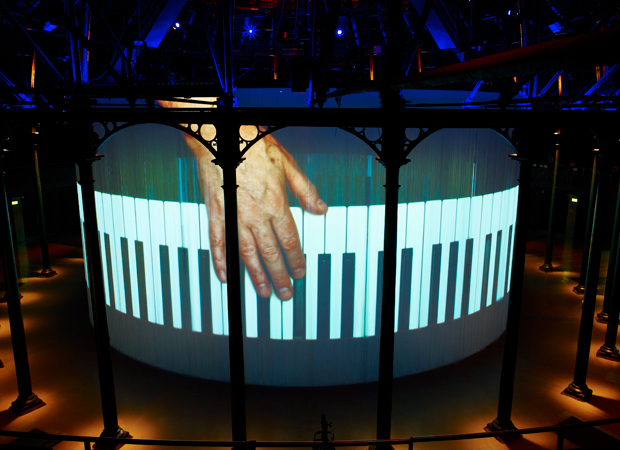
MOMA and Roundhouse shows give new meaning to public art
Ron Arad and Carlito Carvalhosa works invite audience participation
Art can be democratic in a variety of guises none more so of course than when entry is free and viewers become part of the work. But a show that opens in the main atrium of New York’s Museum of Modern Art (MOMA) tomorrow (August 24) promises to be not just particularly immersive in a physical sense – visitors will enter a huge elliptical spiral made of white fabric that fills the huge space from ceiling to floor – but one in which the audience will participate whether they choose to or not. Each day, the noise created inside the spiral will be recorded and the next day, relayed back as part of the work.
"It’s like being part of an enormous piece of invisible sculpture," says curator Luis Peres-Orama, who first saw the piece by Brazilian artist Carlito Carvalhosa in the Pinacoteca do Estado in Sao Paolo, Brazil last year.
"I’d gone to the gallery to see something else,” Peres-Orama tells Phaidon, "and came across this, called Sum of Days. It combines monumentality, with the enormousness of the fabric installation, and the real intimacy of the sound."
In New York, as in Sao Paolo, Phillip Glass will also be making a contribution, performing twice inside the ellipse on September 6 and 7, while the audience gathers on the outside. “That will then be played in the installation in the following days, but gradually erased by other newer sounds,” says Peres-Orama.
 Carlito Carvalhosa, Sum of Days (2010)
Carlito Carvalhosa, Sum of Days (2010)This kind of immersive, experiential work is on the increase. Gelitin's ‘boating lake’ (Normally, Proceeding And Unrestricted With Without Title) on the roof of the Hayward Gallery in 2008 required visitors to row the boats across the lake in order to turn it into a living piece, When Carsten Höller installed his slides in Tate Modern, they were continually animated by the public and at last year’s Marina Abramovich show at MOMA, the artist sat opposite a member of the public throughout the day to create a new art work.
Maybe it’s because we spend so much time, wedded to our computers, watching YouTube, receiving art and culture as a second-hand experience that it’s enhanced our desire for the real thing in real time, unmediated - and occasionally even a bit messy.
Across the pond from America something with a superficial similarity has been happening in the Roundhouse in London, the extraordinary circular edifice built in 1846 to house steam engines. Inside its spectacular structure, Israeli designer Ron Arad has created an inner wall of 5,600 suspended plastic rods – 60kms in total -which form a 360 degree screen inside and out and which serves to elongate and distort images and videos by the likes of Matt Collishaw and Christian Marclay, each played out to an exquisite, bespoke soundtrack.
"I thought people would enjoy walking through the wall and having the images wash over them," says Arad. "But while children seem to get a thrill from swishing through the hanging cords, adults enter the circle and sit on the floor, treating it largely like an Imax cinema." Which is the point of democracy: the majority will prevail. Or, put another way, the visitor is always right.
Caroline Roux